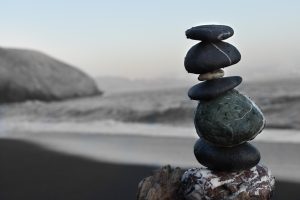Posts by KL Burd
When day comes, we ask ourselves:
Where can we find light
In this never-ending shade?
The loss we carry, a sea we must wade.
Amanda Gorman
The Hill We Climb
Anyone who has ever walked through tough times can tell you that light isn’t always easy to find. Tough times can either make us or break us, but we exist in the in-between for the longest part of the journey.
When we lose something we love — whether it be a job, a lover, a friend, or a family member — we are thrust into a world for which there is no simple escape.
We exist between the tough times and the breaking or strengthening of our backs. Either outcome arrives without warning, signifying an unexpected end to our pain. It creeps up on you and pounces like a cat preying on an unsuspecting mouse.
Loss is a strange thing.
It has perplexed us forever. We can’t understand it, yet we must. We can’t fully grasp it, yet it sits with us daily.
Death, in the same regard, cannot be conquered, yet we feel the need to somehow overcome it. But even in the overcoming of it, we never defeat it… we simply learn how to move forward with it.
The loss we carry, a sea we must wade.
For me, loss has always created a need for escape; a place to exist as my soul decides whether to strengthen or break. I lost my brother at a young age, I’ve lost former students, I’ve lost jobs that I loved, but it wasn’t until I lost my dad did the world come crashing down. The man I thought was invincible was vulnerable to kryptonite. Just like we all are. For him it was his heart. For you it may have been a family member with cancer, or the foreclosure of your house, or the divorce you didn’t see coming.
It was here — tossed into the sea — that I turned to the one thing I knew could be mine and mine alone: writing.
I didn’t know the outcome, and I didn’t know if it would be helpful or harmful, but I knew that I needed someplace to go so that the sea didn’t overtake me.
Writing had been a distant thought in the long-forgotten woods of childhood — something I always dreamed of doing and never fully committed to. But, after the death of my father, it became my solace… my refuge… a place to hide from the pain… and the vehicle by which I could move through the pain.
So many of us have been… there. In that moment of pain where life is gray and the colors are muted. The world stops spinning, and the sun refuses to rise, and in those moments we have an option — especially for those of us who call words our craft, our love — to let the pain flow through our words.
Writing through the pain gives […]
Read More“One writes out of one thing only—one’s own experience. Everything depends on how relentlessly one forces from this experience the last drop, sweet or bitter, it can possibly give. This is the only real concern of the artist, to recreate out of the disorder of life that order which is art.”
James Baldwin – Notes of a Native Son
Life is full of disorder. There are so many things that are, that ought not to be.
In any environment, we not only see disorder when it’s present but we can feel it, we can sense it, we can taste it. It messes with our holistic equilibrium. Some of us fear disorder, others easily live in it, but many despise it.
The real question is, “What do we do with it?”
To counteract disorder, we look to order. And here we see two opposing forces on the seesaw of life. The gravity of this powerful dichotomy weighs on our very souls every day. Disorder innately feels so out of place that order naturally presents itself as the ultimate solution.
Order, however, can often indicate rigidity. It signifies parameters and boundaries. It implies the handiwork of someone or something with power. It suggests the way things should be — but according to whom? And within this non-enticing rigidity, we see that order can be just as frightening as disorder.
No one wants to escape the chaos of their life only to be put in a box and told what to do and how to live.
But there is another order. One that is not given to you by someone else. One that expands every corner of the box and pushes us from a three-dimensional world into an infinite one.
So, how do we move from disorder to an order that we would welcome? We follow the words of the Native Son, “…recreate out of the disorder of life that order which is art.”
The magic is in the art.
Our working definition:
Art is the expression or application of human creative skill and imagination, producing works to be appreciated primarily for their beauty or emotional power.
The application of human skill and imagination — that’s it! That’s the key! We artists, we writers, we musicians, we creators weave beauty and emotional power from both our human skill and imagination.
To create artistic order out of disorder, one has to first have an imagination — a vision so to speak — a vision of what could be. A vision of order, beauty, and emotional power forged from the seeds of disorder.
An artist must have a vision and embedded in that vision is something that the artist might not even see themselves. One must have hope.
Hope — that important yet often elusive immaterial thing that lies just beyond the grasp of our fingertips. Hope can be an anchor for our souls, yet it’s not a past anchor, or a present anchor, but a […]
Read More“One writes out of one thing only—one’s own experience. Everything depends on how relentlessly one forces from this experience the last drop, sweet or bitter, it can possibly give. This is the only real concern of the artist, to recreate out of the disorder of life that order which is art.”
James Baldwin – Notes of a Native Son
Over the ages, any revolutionary movement has an element of art tied to it, whether it be paintings, sculptures, writings or music. These mediums are weapons in the fight that shed no blood and take no prisoners, yet they inspire, enrage, motivate, and encourage.
Art is resistance to the status quo.
It is a gift that enables the user to fight against the norms of the day. The way things are. The status quo is — by its own nature — resistance… It is resistance to change. And when we look at our current state of affairs, we have to understand that there is a dichotomy between the temporary and the persistent.
The temporary state of things may refer to a loss of a job. Your goal might be to rectify that situation as soon as possible. It’s something moveable, something you can change with your actions.
The persistent state of things, however, may indicate that you are stuck in a socioeconomic system that resists movement out of one social class and into another. This part may be immovable. This is where true frustration lies — in the things we believe we cannot change.
The status quo often stares at us directly in our face, like when an SS soldier bangs on your door in 1945 Germany or a cross burns on your lawn in 1965 Georgia. It’s the persistence of a civil war in Southeast Asia or the horrors of the prison industrial complex or inequitable policies that keep us at odds with one another.
When we think about the status quo we are talking about the pieces of puzzle that refuse to budge, that refuse to move, because that’s just the way it is.
This is where art comes in. As artists, we constantly look at the persistent — the things that bother us when we examine the world. We grieve it, we agonize over it, and then we get to a place where we fight it.
We need to consider art as a powerful force against the status quo. When we do it becomes a refusal to accept the world around us for the way it is, for the way that others dictate it to be. Art is the ability to produce works that will be appreciated not only for their beauty but their emotional power.
This is when you take a look at the world around you and weave what you see into your storytelling. It’s Anne Frank penning her diary despite her persistent state of torture and ridicule. It’s Nikki Giovanni writing Nikki-Rosa — a poem dripping with resistance to the status quo. A poem that shows the hardness and complexities of life; the pain of her persistent current state, […]
Read MorePlease join us in welcoming WU’s newest contributor, KL Burd! You might remember KL from his guest post this past fall, 7 Ways to Make Early Morning Writing a Reality. “Believing that words have the power to bring about healing and change, KL Burd’s work focuses on the intersection of race, equity, and hope for the future. ” Learn more about KL on his bio page. Welcome, KL!
“One writes out of one thing only—one’s own experience. Everything depends on how relentlessly one forces from this experience the last drop, sweet or bitter, it can possibly give. This is the only real concern of the artist, to recreate out of the disorder of life that order which is art.” — James Baldwin, Notes of a Native Son
What is art? For so many people, art is relegated to paintings that capture their attention or stoke their imagination. Art can be a twisted sculpture that draws your eyes to sharp edges and jagged concrete, or it can be a photo that begs the viewer to step into the life of a captured scene. Art can be many things, but can it be writing? Or the better question, can writing be art?
The Oxford dictionary has a definition of art that states:
The expression or application of human creative skill and imagination, typically in a visual form such as painting or sculpture, producing works to be appreciated primarily for their beauty or emotional power.
I love their definition, although I would argue that they are leading us towards a specific view of art when they say typically in a visual form such as painting or sculpture. Let’s remove those leading words and look at it again.
Art is the expression or application of human creative skill and imagination, producing works to be appreciated primarily for their beauty or emotional power.
How many of us would like our writing to be viewed this way—as an application of human creative skill and imagination? I for one, would love this. We study our craft and improve on our form so that our creative skill can be best expressed on paper. We endeavor to work magic—not unlike the blues artist who has spent 15 years getting her guitar to sing every note it produces with the same tone and timbre that dances across her mind. And—in the case of the blues, along with many other art forms—this expression of creativity, of skill, of emotion is brought to life through the person delivering the experience.
Imagine with me two different artists.
The first one plays the right chords, hits the solos, and sings the notes flawlessly. They did well and you applaud their rendition.
Then you get the second artist.
She plays the same chords, hits the same solos, and sings the same notes flawlessly. But something is drastically different. This one rocks you to the core. This one gives you goosebumps. This one sends you into a spiral of relentlessly searching for everything that artist has to offer. Sure, the second artist sang the same notes and played the same chords as the first but they […]
Read MoreI’m so pleased to introduce you to first-time guest, Keivon Liburd! Keivon is an author, children’s pastor, and educator in Austin, Texas. Married with two boys, Keivon writes so that underrepresented kids, especially young Black boys and girls, can see themselves in every type of story imaginable. He is also the co-founder of HitPitch, a up and coming tool that matches writers to beta-readers, agents, and more!
This is a post Therese asked Keivon to write for WU after he tweeted about steps he’d taken to successfully forge the wake-early-to-write habit. With life’s lines blurring so drastically right now–working from home, working with kids at home, etc–it might be more important than ever to consider establishing an untouchable set of minutes on the daily for your writing. And we’ve heard how magic the morning hours can be, so let’s consider it!
Big thanks to Keivon for writing this for us. You can learn more about him on his blog, and by following him on Twitter.
7 Ways to Make Early Morning Writing a Reality
Early Morning? You’ve got to be kidding me? Now, I know that’s what many of you are saying, but hear me out. This can work for you. Everyone wants to finish their next novel, but talking about finishing is so much easier than actually finishing. This was my issue.
The date was December 1, 2018. I was one day removed from participating in NaNoWriMo. I started a new manuscript called Chasing Lincoln, and was really excited about this fresh endeavor. Although I didn’t hit my 50K word goal for the month, I did get to 38K or so. In my mind, I could keep pushing through and be done by December 31st or maybe late January 2019 at the latest.
***Spoiler Alert: I wasn’t done by January.
Actually I wasn’t done by March, May, or even December 2019. Sometimes, life simply gets in the way. But you know what? That’s reality for most of us. We have jobs, we have friends, we have kids, we have pets, we have a lot of life outside of writing. Yet we love writing so much!
I tried to write at night but I can’t tell you how many times my wife nudged me after seeing a trail of zzzzzzzzzzzzzzzs on my laptop. I tried writing at lunchtime, but I never got into a good flow in between bites of leftover spaghetti. December 2019 spilled into January 2020, and although I was determined to finish this book, I just couldn’t find the time.
Then I got an email from my good friend, Daron K. Roberts. He writes weekly “Life Letters” that inspire people to follow after their dreams and goals. This one was titled, “Write the Damn Book Already.” Well that got my attention. Daron writes non-fiction and said that he completed his book by getting up at 4 am every morning and going to a 24-hour coffee shop where he put pen to paper 6 days a week.
For some reason, this hit me square in […]
Read More












